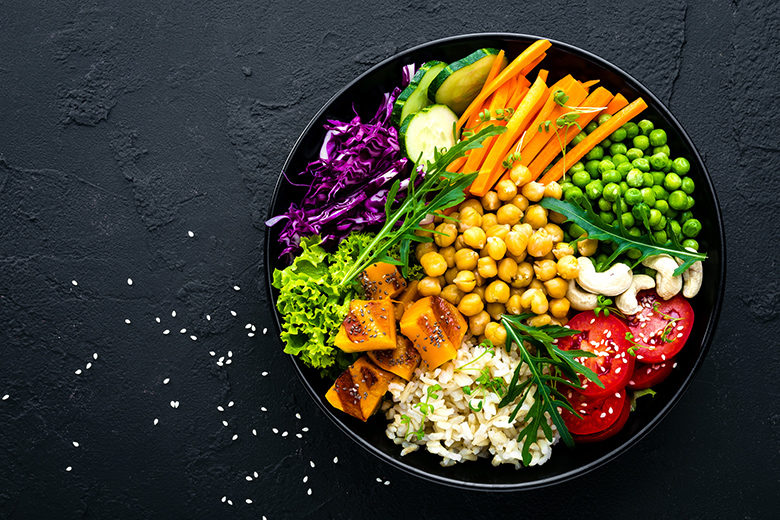
Cancer remains the number two cause of death in this country today. Yet how many people know that at least one-third of all cancers could be prevented by a healthy lifestyle including eating a healthy diet and being physically active? After smoking, diet and lifestyle have the biggest impact on cancer prevention! Knowledge is power.
Read on for some ways to decrease cancer risk.
Eat More Plants
Research indicates that fruits and vegetables likely protect against many cancers. These powerhouses are rich in phytochemicals, fiber and health protective nutrients such as potassium. They are low in calories and therefore help us in our efforts with weight control. Shockingly, a recent review showed that less than 20 percent of people eat the recommended 1½ cups of fruit and 2 to 3 cups of vegetables daily.
Beans, peas and lentils offer a good source of protein, fiber and folate, offering protection against colon and other cancers. These versatile foods can take the place of some or all of the meat eaten at a meal. Some creative ways to get these and more plant foods include:
- Collard chips
- Roasted chickpeas served as a snack or on top of your salad in place of croutons
- Swap out spaghetti for zucchini “noodles”
- Slice and sauté Portobello mushrooms as a substitute for meat in fajitas or tacos
- Try dehydrated veggies instead of chips for a crunchy snack
- Drink a smoothie made with frozen and fresh fruit, kale or spinach, and carrots
- Make a pasta sauce with red lentils instead of ground beef
Eat Less Sugar
Plain and simple, too much added sugar in the diet can add extra calories and excess pounds. Obesity is linked to an increased risk of 10 different cancers, including endometrial, pancreatic and post-menopausal breast cancer. Diets high in processed sugar are also associated with a state of increased inflammation in the body, which may contribute to disease development over time.
Reduce or eliminate your intake of sugary beverages. Minimize added sugar from foods you could consider healthy, such as Greek yogurt, whole-grain tortilla chips, crackers and spaghetti sauce. Reduce or eliminate table sugar in recipes by replacing with pureed fruit such as bananas, prunes or applesauce. Fruit-based desserts such as cobblers satisfy a sweet tooth and offer another way to get more fruit servings. Make sure to have sliced fresh fruit such as pineapple and watermelon on hand for snacks. Pack small containers with fruits and nuts for quick snacks.
Broaden Your Horizons
In an effort to eat more cancer-preventative fruits and vegetables, I often challenge myself to think beyond my routine. I am now trying plant foods in new ways. Some of my favorites have been “caramels” made with Medjool dates, macaroni-and-cheese made with butternut squash and spaghetti squash “noodles” served with ratatouille and a little Parmesan cheese.
Eating to increase cancer preventative foods is not without some thought and planning, but it’s enjoyable and the health payoffs are many. Here’s to more delicious discoveries!


